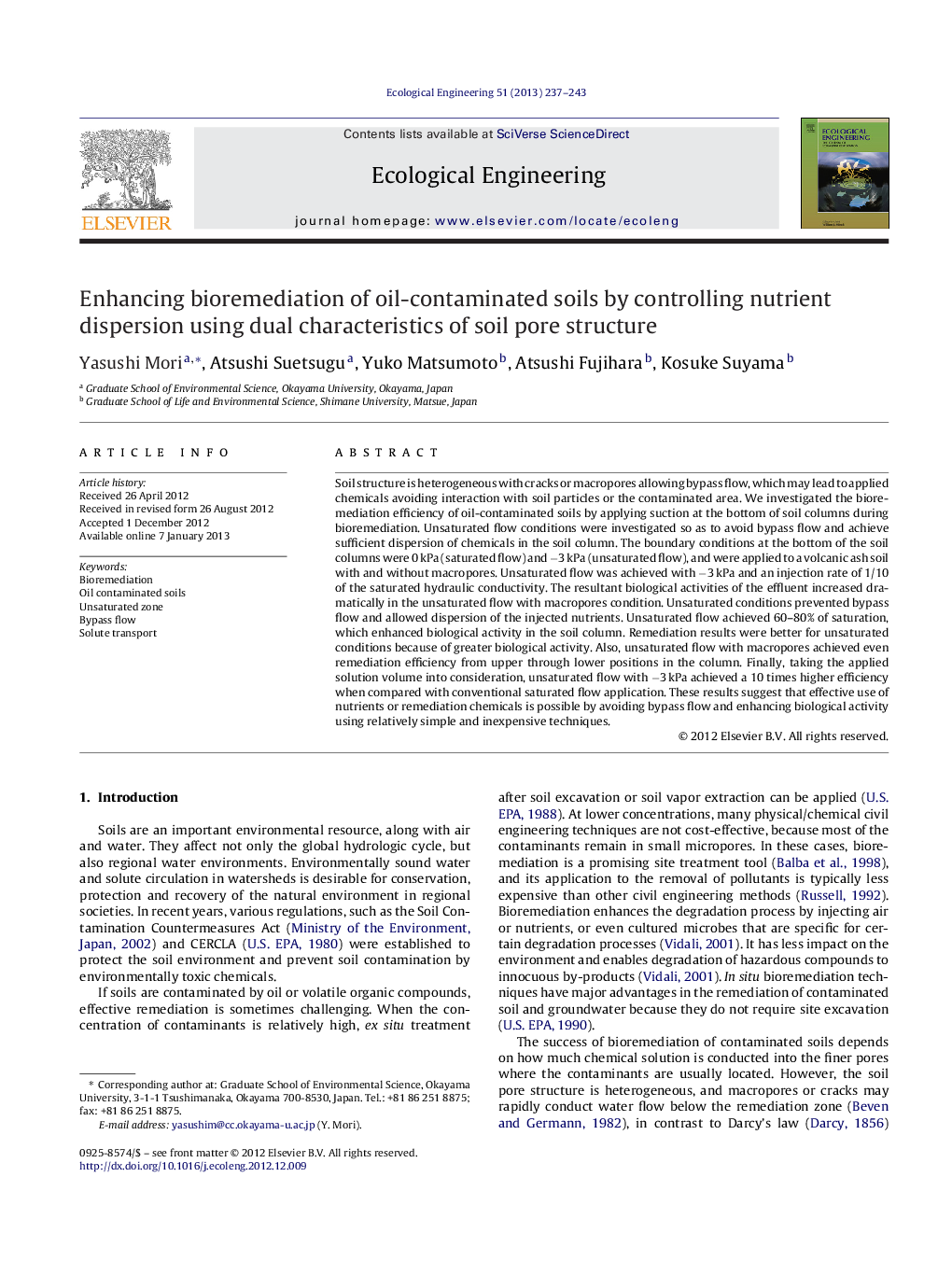| Article ID | Journal | Published Year | Pages | File Type |
|---|---|---|---|---|
| 4389849 | Ecological Engineering | 2013 | 7 Pages |
Soil structure is heterogeneous with cracks or macropores allowing bypass flow, which may lead to applied chemicals avoiding interaction with soil particles or the contaminated area. We investigated the bioremediation efficiency of oil-contaminated soils by applying suction at the bottom of soil columns during bioremediation. Unsaturated flow conditions were investigated so as to avoid bypass flow and achieve sufficient dispersion of chemicals in the soil column. The boundary conditions at the bottom of the soil columns were 0 kPa (saturated flow) and −3 kPa (unsaturated flow), and were applied to a volcanic ash soil with and without macropores. Unsaturated flow was achieved with −3 kPa and an injection rate of 1/10 of the saturated hydraulic conductivity. The resultant biological activities of the effluent increased dramatically in the unsaturated flow with macropores condition. Unsaturated conditions prevented bypass flow and allowed dispersion of the injected nutrients. Unsaturated flow achieved 60–80% of saturation, which enhanced biological activity in the soil column. Remediation results were better for unsaturated conditions because of greater biological activity. Also, unsaturated flow with macropores achieved even remediation efficiency from upper through lower positions in the column. Finally, taking the applied solution volume into consideration, unsaturated flow with −3 kPa achieved a 10 times higher efficiency when compared with conventional saturated flow application. These results suggest that effective use of nutrients or remediation chemicals is possible by avoiding bypass flow and enhancing biological activity using relatively simple and inexpensive techniques.
Graphical abstractFigure optionsDownload full-size imageDownload as PowerPoint slideHighlights► Bypass flow was prevented by −3 kPa suction and 1/10 of saturated injection rate. ► Biological activity was the highest with 0.6–0.8 of water saturation. ► Even remediation was achieved through the soil column for unsaturated flow with macropores. ► Soil column without macropores showed higher water content toward the soil surface indicating clogging. ► Macropores were useful as long as the infiltration process was controlled.
